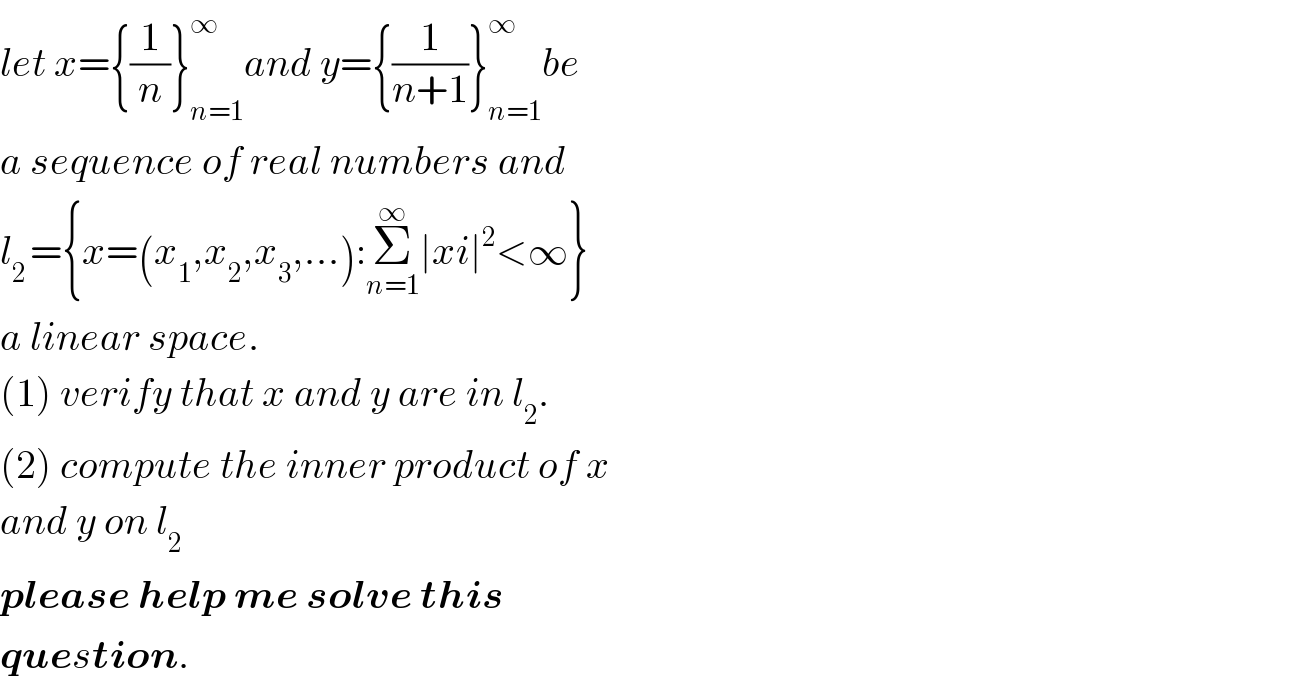Question Number 31314 by Abdullai otchere last updated on 08/Mar/18

$${let}\:{x}=\left\{\frac{\mathrm{1}}{{n}}\right\}_{{n}=\mathrm{1}} ^{\infty} {and}\:{y}=\left\{\frac{\mathrm{1}}{{n}+\mathrm{1}}\right\}_{{n}=\mathrm{1}} ^{\infty} {be}\: \\ $$$${a}\:{sequence}\:{of}\:{real}\:{numbers}\:{and} \\ $$$${l}_{\mathrm{2}\:} =\left\{{x}=\left({x}_{\mathrm{1}} ,{x}_{\mathrm{2}} ,{x}_{\mathrm{3}} ,…\right):\underset{{n}=\mathrm{1}} {\overset{\infty} {\sum}}\mid{xi}\mid^{\mathrm{2}} <\infty\right\} \\ $$$${a}\:{linear}\:{space}.\: \\ $$$$\left(\mathrm{1}\right)\:{verify}\:{that}\:{x}\:{and}\:{y}\:{are}\:{in}\:{l}_{\mathrm{2}} . \\ $$$$\left(\mathrm{2}\right)\:{compute}\:{the}\:{inner}\:{product}\:{of}\:{x}\: \\ $$$${and}\:{y}\:{on}\:{l}_{\mathrm{2}} \\ $$$$\boldsymbol{{please}}\:\boldsymbol{{help}}\:\boldsymbol{{me}}\:\boldsymbol{{solve}}\:\boldsymbol{{this}}\: \\ $$$$\boldsymbol{{que}}{s}\boldsymbol{{tion}}. \\ $$
